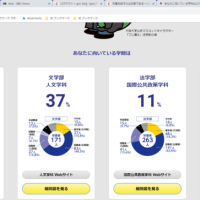昨日の「タンザニアでコウヨウチョウを大量駆除」の参考記事。
BBC Kenyan rice farmers battle quelea birds in Kisumu 13 February 2023 By Dorcas Wangira
今年2月のケニアの例。コメ農家が、鳥追いだけで4人も5人も人を雇わないといけなくてコストにあわない。そこで国に援助を求め、薬剤を散布したりするのだが―。
「Rose Nekesa's rice field in western Kenya has been invaded by huge swarms of the voracious red-billed quelea bird.
Thousands of farmers like her near the lakeside city of Kisumu fear they will reap their worst harvest in five years.
"I'm losing my voice because I spend all day shouting, to chase the birds away. These birds are not afraid of anything," she tells the BBC, holding a huge lump of mud in one hand and a stick in the other.」
案山子もブブゼラも鳥の罠も、結局大して効果がない。
「Scarecrows, the occasional blaring of vuvuzelas and bird traps have all proved ineffective.
"The birds have destroyed nearly all four acres of my farm. I won't earn anything. How will I take my children to school?"」
これじゃあ子供を学校にやるのも無理だよ!というわけだ。
要は雀であって、一日当たりたかが10g程度の草のタネを食べるに過ぎない。が、これが200万羽ともなれば24時間に20トン。うん、それ無理。
「An average quelea bird can eat around 10g (0.35 oz) of grain a day. Not a huge amount, but as the flocks can number two million they can collectively consume as much as 20 tonnes of grain in 24 hours.」
5000万ドルの損害が発生しただろうなこの鳥で、というわけで。しかもサブサハラ中心に。…困りますよね。
「In 2021, the UN's Food and Agricultural Organization (FAO) estimated that $50m (£41m) worth of crops were lost to the birds annually, mostly in sub-Saharan Africa.」
気候変動の影響もあろうと思しく、乾季が強くて野草も育たず、だからまだしも何とかなりそうな稲につくわけだ―という説明が一つ。
「The prolonged drought in the Horn of Africa, which has meant fewer seeds from wild grasses, a primary source of food for queleas, may be behind the invasion of cultivated land as the birds look for an alternative, some Kenyan scientists have suggested.」
他方、それは主動因ではなく、そもそも灌漑事業が進んで稲作地帯が広がったこと自体が課題であるという見方も。そりゃ稲作農耕が広がってなければ稲作への被害は存在しえないからねえ。
「Paul Gacheru, from the environmental organisation Nature Kenya, however argues that climate change-induced drought is not the main driver.
He points the finger at land-use changes as "intensive farming and settlement means that we are losing space for natural vegetation to grow. The quelea species are adapting to the current land use".」
人口増加もあって食糧増産のための山を切り開き稲を育て―そしたらそれに適合した生物種も増えるわな、という。それはそれで理の当然である。そんな切り開いた農業地帯で800万羽も殺したとか―そりゃまあなあ。
「In 2019, the Kenyan government is thought to have killed eight million quelea which had invaded the Mwea Irrigation Scheme, the country's largest rice-growing project.」
なるほど害鳥はわかった。しかしなんで害鳥が増えるのかと言われれば、そりゃあ増えるに値する状況があるからだ―それは人間の増加、農地の増加である。典型的なお話である。
また、農薬散布についても、なんだそれはSilent Springかという話が展開しているので、お好みのひとは読むとよいのです。
BBC Kenyan rice farmers battle quelea birds in Kisumu 13 February 2023 By Dorcas Wangira
今年2月のケニアの例。コメ農家が、鳥追いだけで4人も5人も人を雇わないといけなくてコストにあわない。そこで国に援助を求め、薬剤を散布したりするのだが―。
「Rose Nekesa's rice field in western Kenya has been invaded by huge swarms of the voracious red-billed quelea bird.
Thousands of farmers like her near the lakeside city of Kisumu fear they will reap their worst harvest in five years.
"I'm losing my voice because I spend all day shouting, to chase the birds away. These birds are not afraid of anything," she tells the BBC, holding a huge lump of mud in one hand and a stick in the other.」
案山子もブブゼラも鳥の罠も、結局大して効果がない。
「Scarecrows, the occasional blaring of vuvuzelas and bird traps have all proved ineffective.
"The birds have destroyed nearly all four acres of my farm. I won't earn anything. How will I take my children to school?"」
これじゃあ子供を学校にやるのも無理だよ!というわけだ。
要は雀であって、一日当たりたかが10g程度の草のタネを食べるに過ぎない。が、これが200万羽ともなれば24時間に20トン。うん、それ無理。
「An average quelea bird can eat around 10g (0.35 oz) of grain a day. Not a huge amount, but as the flocks can number two million they can collectively consume as much as 20 tonnes of grain in 24 hours.」
5000万ドルの損害が発生しただろうなこの鳥で、というわけで。しかもサブサハラ中心に。…困りますよね。
「In 2021, the UN's Food and Agricultural Organization (FAO) estimated that $50m (£41m) worth of crops were lost to the birds annually, mostly in sub-Saharan Africa.」
気候変動の影響もあろうと思しく、乾季が強くて野草も育たず、だからまだしも何とかなりそうな稲につくわけだ―という説明が一つ。
「The prolonged drought in the Horn of Africa, which has meant fewer seeds from wild grasses, a primary source of food for queleas, may be behind the invasion of cultivated land as the birds look for an alternative, some Kenyan scientists have suggested.」
他方、それは主動因ではなく、そもそも灌漑事業が進んで稲作地帯が広がったこと自体が課題であるという見方も。そりゃ稲作農耕が広がってなければ稲作への被害は存在しえないからねえ。
「Paul Gacheru, from the environmental organisation Nature Kenya, however argues that climate change-induced drought is not the main driver.
He points the finger at land-use changes as "intensive farming and settlement means that we are losing space for natural vegetation to grow. The quelea species are adapting to the current land use".」
人口増加もあって食糧増産のための山を切り開き稲を育て―そしたらそれに適合した生物種も増えるわな、という。それはそれで理の当然である。そんな切り開いた農業地帯で800万羽も殺したとか―そりゃまあなあ。
「In 2019, the Kenyan government is thought to have killed eight million quelea which had invaded the Mwea Irrigation Scheme, the country's largest rice-growing project.」
なるほど害鳥はわかった。しかしなんで害鳥が増えるのかと言われれば、そりゃあ増えるに値する状況があるからだ―それは人間の増加、農地の増加である。典型的なお話である。
また、農薬散布についても、なんだそれはSilent Springかという話が展開しているので、お好みのひとは読むとよいのです。

























※コメント投稿者のブログIDはブログ作成者のみに通知されます